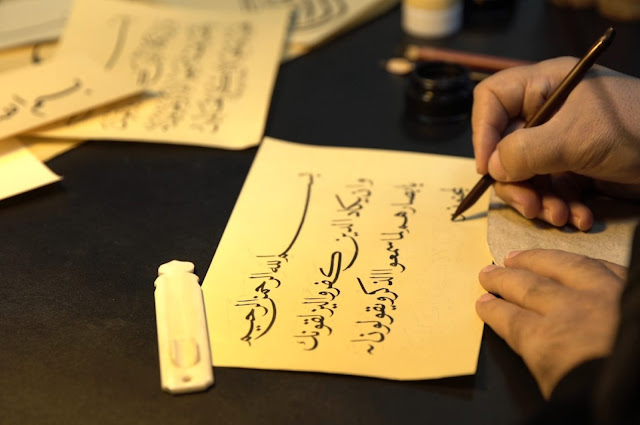By Swaiba Asif Gaining skills is one of the most important things you can do to develop your work. It is the ability to do something well. I...
By Swaiba Asif
Gaining skills is one of the most important things you can do to develop your work. It is the ability to do something well. In addition, it helps you to achieve your goals, gives confidence, and gives you motivation for working too.
Calligraphy is the art of beautiful handwriting. The term may derive from the Greek words for “beauty” (kallos) and “to write” (graphein). It is a visual art form that focuses on manipulating symbols and letters to produce beautiful writing.
According to Claude Mediaville,
“Calligraphy is the art of giving form to signs in an expressive, harmonious, and skillful manner.”
1. Western Calligraphy
Based on the Latin text, Western calligraphy is widely used in the Western world on cards, invitations, inscriptions on certificates, et cetera.
Western calligraphy is one of the most advanced forms of calligraphies spanning many sub-styles.
2. Oriental Calligraphy
The oriental calligraphy is mainly used in East Asia, primarily in China, Japan, and Korea.
The oriental calligraphy has a meditative aspect to it. The letters are written with a broader and longer brush requiring more movement than in other forms of calligraphy.
3. Islamic Calligraphy
Islamic calligraphy is associated chiefly with Islamic spirituality. It is also sometimes called Arabic calligraphy — because the scribes write in Arabic letters — but this geographical or ethnic specification is not true because many Islamic calligraphers weren’t Arab.
Islamic calligraphy is also a geometrical and artistic expression of the beauty of God. This type of calligraphy can be found in Islamic architecture as well.
Since the introduction of computers and other technological accessories, it seems as though calligraphy is as distant from us as ever. However, it still shows elegance, grace, and distinction to our most significant documents. It is utilized for adding artistic touches to inscriptions, logos, font design, certificates, and records. Calligraphy is also often used for the likes of props and moving images for film and television, court testimonials, and maps. It also plays the role of major inspiration for many alternative and unique artistic practices.
One important benefit of calligraphy that is becoming more recognized these days, is the meditative action of creation. It is a skill that requires great patience, and in practising patience, we find ourselves letting go of the chatter in our minds and focusing all our energies on the task at hand.
“The future belongs to those who learn more skills and combine them in creative ways.”








